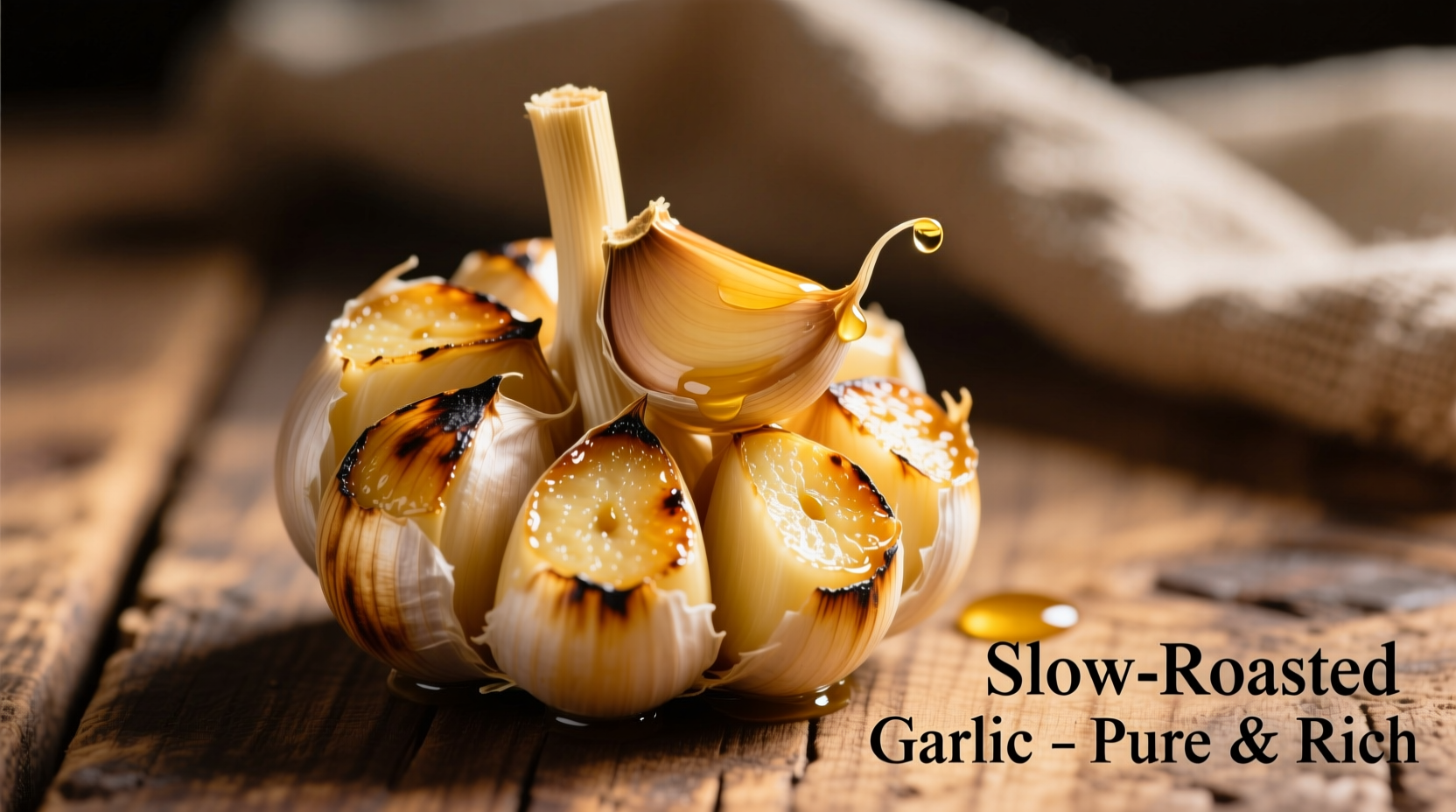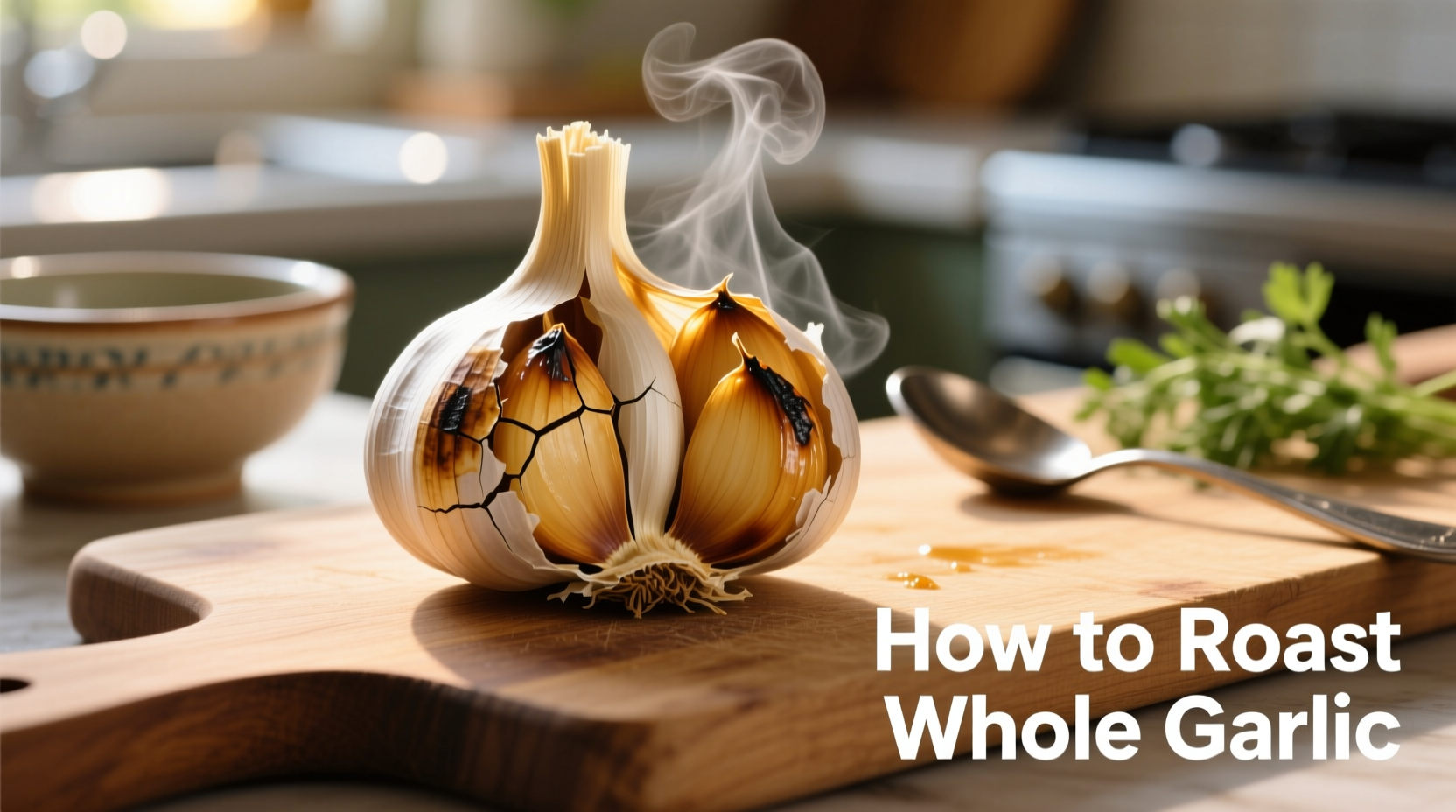Why Roasting Whole Garlic Beats Other Methods
Unlike minced or chopped garlic that burns easily, roasting whole bulbs creates an entirely different flavor profile. The Maillard reaction during roasting converts harsh allicin compounds into stable S-allyl cysteine (SAC), producing sweet, nutty notes without bitterness. According to research published in the Journal of Agricultural and Food Chemistry, this process actually increases bioavailability of certain beneficial compounds while reducing garlic's pungency.
| Preparation Method | Flavor Profile | Active Compounds | Best For |
|---|---|---|---|
| Raw garlic | Sharp, pungent, spicy | High allicin | Salsas, dressings, quick sauces |
| Minced sautéed | Warm, aromatic | Moderate allicin | Stir-fries, pasta sauces |
| Whole roasted | Sweet, mellow, buttery | High SAC | Spreads, mashed potatoes, soups |
Essential Equipment and Ingredients
You need surprisingly few items for perfect roasted garlic:
- Fresh garlic bulbs - Choose firm, heavy bulbs with tight cloves (avoid sprouting or soft spots)
- Extra virgin olive oil - Use enough to coat cloves but not pool excessively
- Kosher salt - Enhances natural sweetness during roasting
- Aluminum foil - Creates steam for even cooking
- Sharp knife - For trimming tops

Step-by-Step Roasting Process
Preparation (3 minutes)
- Preheat oven to 400°F (200°C) - this temperature consistently delivers optimal results according to America's Test Kitchen testing
- Place whole garlic bulbs on a cutting board and slice 1/4 inch from the top to expose cloves
- Place bulbs upright in a baking dish or on foil, cut-side up
- Drizzle 1-2 teaspoons olive oil over each bulb, ensuring oil penetrates between cloves
- Sprinkle with salt and optional additions like rosemary or thyme
Roasting (35-45 minutes)
Wrap each bulb loosely in foil or cover the baking dish. Roast until cloves are deeply golden and tender when pierced with a knife. The exact time depends on bulb size:
- Small bulbs (8-10 cloves): 35 minutes
- Medium bulbs (10-12 cloves): 40 minutes
- Large bulbs (12+ cloves): 45 minutes
For foolproof results, check doneness by gently squeezing the bulb base - properly roasted garlic will feel soft throughout. Under-roasted garlic remains firm and sharp; over-roasted develops bitter notes.
Troubleshooting Common Roasting Issues
Even experienced cooks encounter these challenges:
- Burnt cloves - Reduce temperature to 375°F and increase oil slightly. The FDA recommends never exceeding 400°F for extended periods with olive oil
- Uneven cooking - Rotate baking dish halfway through roasting
- Bitter taste - Avoid over-browning; remove from oven when cloves reach deep golden (not dark brown)
- Dry cloves - Increase oil by 1/2 teaspoon per bulb next time
Creative Ways to Use Your Roasted Garlic
Don't limit roasted garlic to spreads! Professional chefs use it in these unexpected ways:
- Compound butter - Blend with softened butter for steak topping
- Pasta infusion - Toss whole roasted cloves with spaghetti and Parmesan
- Vegetable enhancer - Mix into mashed potatoes or roasted carrots
- Salad dressing base - Emulsify with lemon juice and olive oil
- Meat marinade - Puree with herbs for chicken or lamb
Storage Guidelines for Maximum Freshness
Proper storage maintains flavor and safety. Following USDA food safety recommendations:
- Room temperature: Consume within 2 days (not recommended for food safety)
- Refrigeration: Store in airtight container for up to 1 week
- Freezing: Place cloves in olive oil in ice cube trays (3 months)
- Oil preservation: Submerge in oil and refrigerate (1 week only - botulism risk increases with longer storage)
Seasonal Garlic Selection Tips
Garlic quality varies throughout the year. Understanding this timeline ensures optimal roasting results:
- July-August: Fresh harvest (wet garlic) - higher moisture, milder flavor
- September-December: Cured hardneck varieties - complex flavor, ideal for roasting
- January-April: Stored softneck varieties - consistent quality, widely available
- May-June: End-of-season bulbs - check for firmness before purchasing











 浙公网安备
33010002000092号
浙公网安备
33010002000092号 浙B2-20120091-4
浙B2-20120091-4